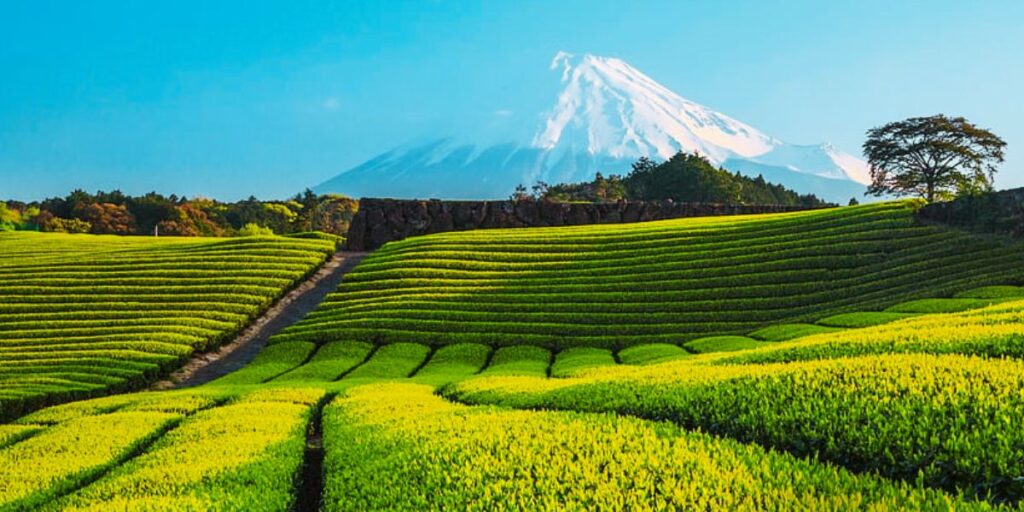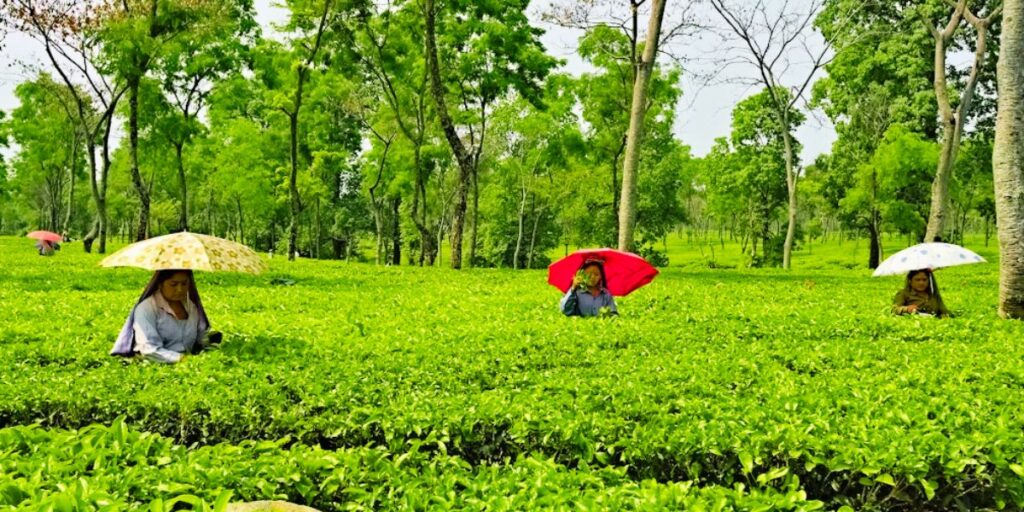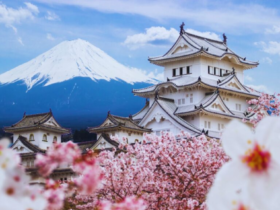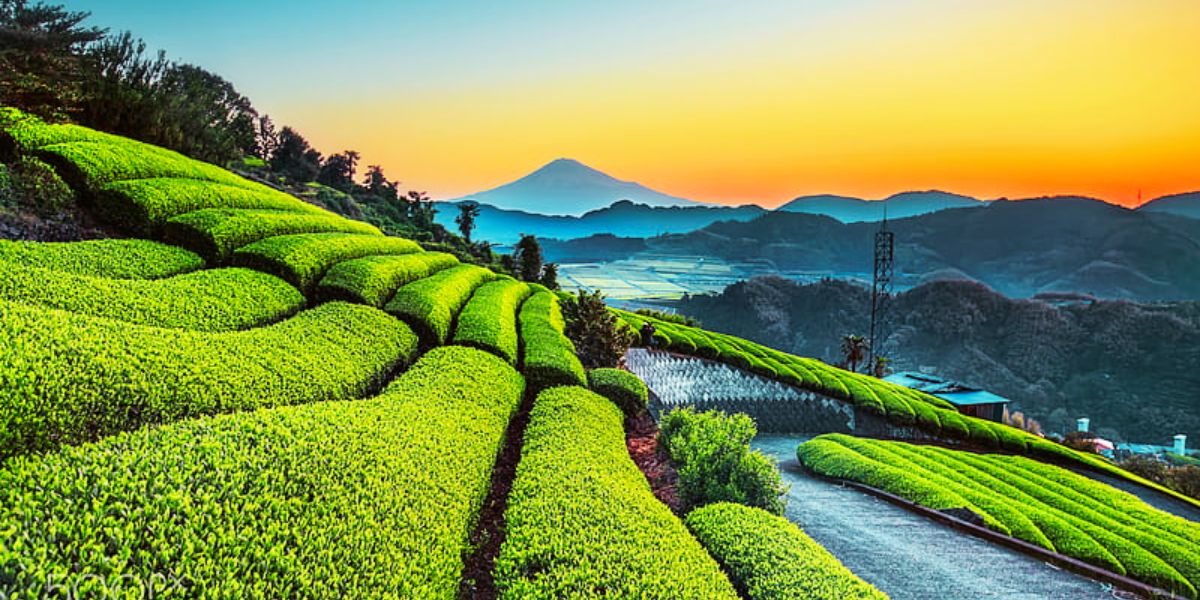Tea, a simple beverage, has an incredibly rich and complex history. It is more than just a drink; it’s a cultural ritual, a source of solace, and a connection to the natural world. Across the globe, tea gardens or plantations are not just agricultural sites but destinations that offer an immersive experience into the world of tea. These tea gardens, located in some of the most scenic and serene locations, invite visitors to explore the beauty of tea cultivation, the art of tea making, and the cultural significance of tea. Here are some of the best tea garden places in the world that every tea lover should visit.
1. Darjeeling, India
The Champagne of Teas
Darjeeling, often referred to as the “Champagne of Teas,” is nestled in the foothills of the Himalayas. The tea from this region is known for its distinctive flavor, which is often described as muscatel, and its light, floral aroma. The tea gardens here are spread across steep slopes, with breathtaking views of snow-capped peaks, including the majestic Kanchenjunga, the third-highest mountain in the world.
Must-Visit Tea Estates:
- Happy Valley Tea Estate: One of the oldest tea gardens in Darjeeling, it offers guided tours where you can see the entire process of tea making, from plucking the leaves to processing them.
- Makaibari Tea Estate: This estate is famous for its organic and biodynamic farming practices. Visitors can stay in the estate’s eco-friendly accommodations and enjoy tea tasting sessions.
Experience: Visit during the plucking season (March to November) to witness the vibrant activity of tea production. Don’t forget to take a ride on the Darjeeling Himalayan Railway, a UNESCO World Heritage Site, which offers stunning views of the tea gardens.
2. Nuwara Eliya, Sri Lanka
The Little England of Sri Lanka
Nuwara Eliya, often referred to as “Little England” due to its colonial architecture and cool climate, is located in the central highlands of Sri Lanka. The region is known for producing Ceylon tea, which is renowned for its brisk, full-bodied flavor. The lush green tea plantations are a sight to behold, stretching across rolling hills and misty valleys.
Must-Visit Tea Estates:
- Pedro Tea Estate: This estate offers guided tours where visitors can learn about the traditional methods of tea production. The estate’s factory still uses machinery that dates back to the 19th century.
- Lover’s Leap Estate: Named after a local legend, this estate provides stunning views of waterfalls and the surrounding hills. The tea produced here is of exceptional quality, with a delicate flavor.
Experience: Stay in one of the colonial-style bungalows that have been converted into boutique hotels, offering a taste of the British era. Enjoy a cup of freshly brewed Ceylon tea while taking in the scenic views of the tea gardens.
3. Munnar, India
The Emerald Jewel of South India
Munnar, located in the Western Ghats of Kerala, India, is famous for its sprawling tea gardens, which are among the highest in the world. The region’s cool climate and high altitude are perfect for cultivating high-quality tea. Munnar’s tea gardens are a blend of tradition and innovation, with a focus on sustainable practices.
Must-Visit Tea Estates:
- Tata Tea Museum: This museum offers a glimpse into the history of tea cultivation in Munnar. Visitors can see old tea processing equipment and learn about the different varieties of tea produced in the region.
- Kolukkumalai Tea Estate: This is the highest tea plantation in the world, situated at an altitude of 7,900 feet. The estate offers breathtaking views of the surrounding mountains and valleys.
Experience: Trek through the tea gardens or take a guided tour to learn about the different stages of tea production. The cool, misty mornings in Munnar provide the perfect setting for a relaxing tea experience.

4. Cameron Highlands, Malaysia
Malaysia’s Tea Haven
Cameron Highlands, a hill station in Malaysia, is known for its cool climate, lush landscapes, and sprawling tea plantations. The region’s tea gardens are a popular tourist attraction, offering visitors a chance to explore the beauty of tea cultivation while enjoying the refreshing highland air.
Must-Visit Tea Estates:
- Boh Tea Plantation: Established in 1929, Boh is one of the largest tea producers in Malaysia. The plantation offers guided tours, a tea shop, and a café with panoramic views of the tea gardens.
- Cameron Valley Tea Estate: This estate offers a more intimate experience with smaller tea gardens. Visitors can take a walk through the tea fields and enjoy a cup of freshly brewed tea at the estate’s café.
Experience: Visit the Boh Tea Centre, which offers interactive exhibits on the history and process of tea production. Don’t miss the opportunity to sample different varieties of tea while enjoying the stunning views of the plantation.
5. Hangzhou, China
The Birthplace of Green Tea
Hangzhou, located in eastern China, is home to the famous Longjing (Dragon Well) tea, one of the most renowned green teas in the world. The tea gardens in this region are steeped in history and tradition, with tea cultivation dating back over a thousand years. The serene environment, with its picturesque lakes and ancient temples, adds to the charm of the tea gardens.
Must-Visit Tea Estates:
- Meijiawu Tea Village: This village is famous for producing Longjing tea. Visitors can tour the tea fields, learn about the traditional methods of tea production, and participate in tea ceremonies.
- Longjing Tea Plantation: Located near the West Lake, this plantation offers stunning views of the tea fields and the surrounding hills. The tea produced here is known for its delicate flavor and fragrant aroma.
Experience: Take part in a traditional tea ceremony and learn about the art of tea brewing. Visit the China National Tea Museum to gain a deeper understanding of the history and culture of tea in China.
6. Shizuoka, Japan
The Land of Matcha
Shizuoka, located on the Pacific coast of Japan, is the country’s largest tea-producing region. The region is famous for its high-quality green tea, particularly matcha, which is used in traditional Japanese tea ceremonies. The tea gardens in Shizuoka are set against the backdrop of Mount Fuji, providing a stunning and serene environment for tea cultivation.
Must-Visit Tea Estates:
- Nihondaira Tea Plantation: This plantation offers panoramic views of Mount Fuji and Suruga Bay. Visitors can participate in tea-picking activities and enjoy a cup of freshly brewed green tea.
- Mariko Tea Garden: Located in the historic Mariko district, this garden is known for its high-quality matcha. Visitors can learn about the production of matcha and enjoy a traditional tea ceremony.
Experience: Visit during the tea-picking season (April to June) to experience the vibrant atmosphere of the tea gardens. Enjoy a cup of matcha while taking in the breathtaking views of Mount Fuji.

7. Assam, India
The Largest Tea-Producing Region
Assam, located in northeastern India, is the largest tea-producing region in the world. The tea from this region is known for its bold, malty flavor and is the main ingredient in many popular blends, including English Breakfast tea. The tea gardens in Assam are spread across vast plains, with the mighty Brahmaputra River flowing through the region.
Must-Visit Tea Estates:
- Mancotta Tea Estate: This estate offers heritage bungalow stays, allowing visitors to experience the colonial charm of Assam’s tea gardens. Guided tours of the estate provide insights into the process of tea production.
- Jorhat Tea Estates: Jorhat is known as the “Tea Capital of the World” and is home to some of the oldest tea estates in Assam. Visitors can explore the tea gardens, visit tea factories, and enjoy tea-tasting sessions.
Experience: Stay in a tea bungalow, explore the lush tea gardens, and learn about the unique terroir of Assam that contributes to the distinct flavor of its tea. Visit the Tocklai Tea Research Institute to learn about the latest innovations in tea cultivation.
Conclusion
Tea gardens are more than just places where tea is grown; they are living museums that showcase the art and history of tea cultivation. From the misty hills of Darjeeling to the scenic landscapes of Shizuoka, these tea gardens offer a unique experience for tea lovers and travelers alike. Whether you’re sipping a cup of Darjeeling tea with the Himalayas in the background or enjoying a traditional matcha ceremony in Japan, visiting these tea gardens is an unforgettable journey into the world of tea.

















Leave a Reply